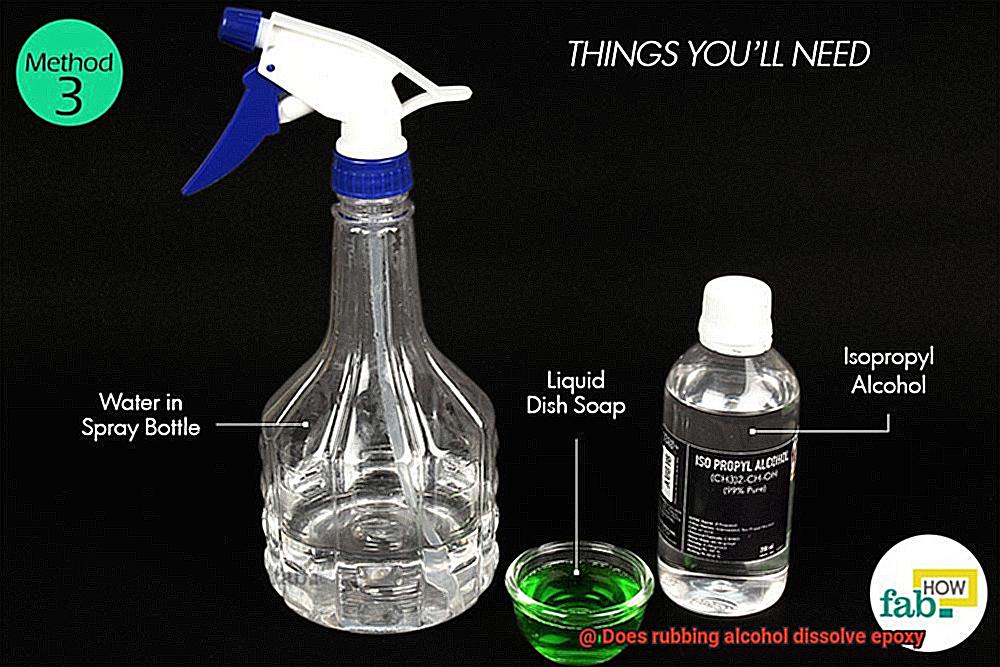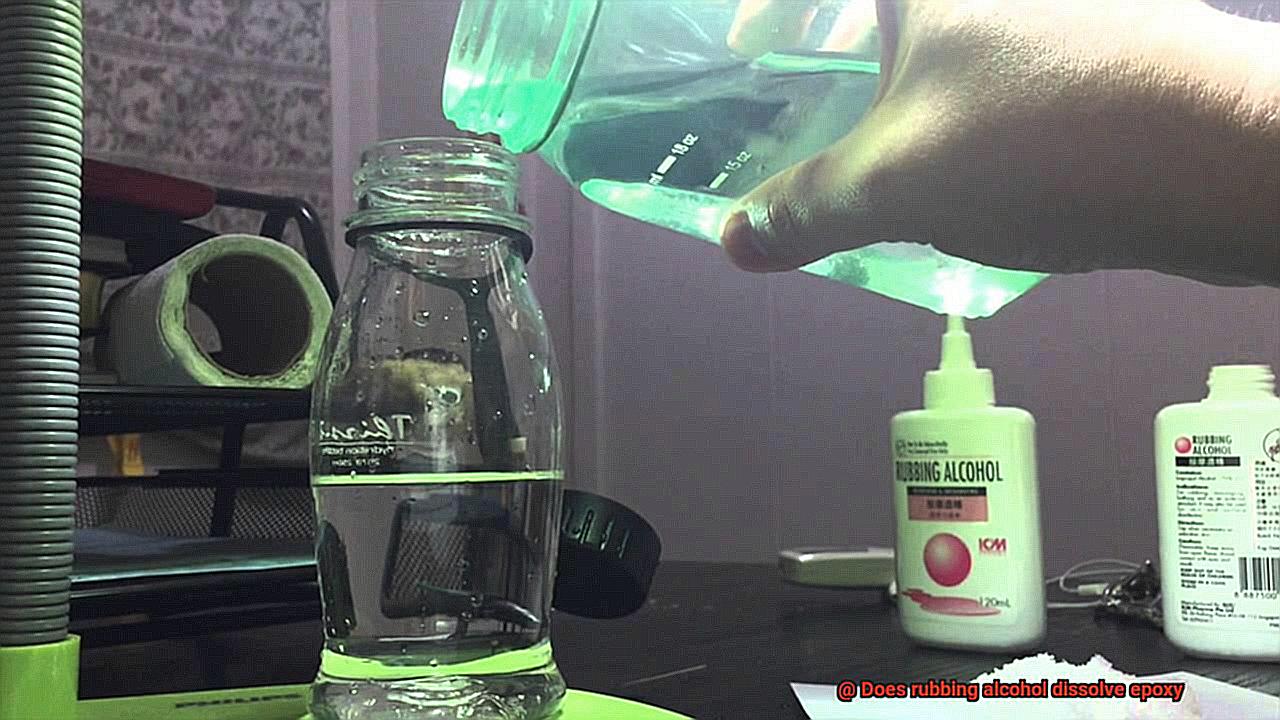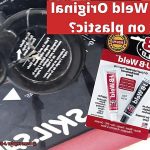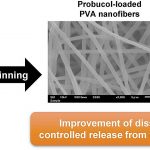Are you a DIY enthusiast who loves working with epoxy? If so, you know that removing it can be a real pain. Luckily, there are many solvents available to help dissolve and remove it safely. One of the most commonly asked questions is whether rubbing alcohol can dissolve epoxy.
Rubbing alcohol, also known as isopropyl alcohol, is a staple in most households for cleaning and disinfecting. While it may seem like a perfect solution for dissolving epoxy, the answer is not as simple as a yes or no.
In this article, we’ll dive into the effectiveness of rubbing alcohol as an epoxy solvent and explore its potential risks and benefits. Additionally, we’ll discuss alternative methods for removing epoxy if rubbing alcohol fails to do the job.
By the end of this post, you’ll have all the knowledge necessary to approach removing epoxy from various surfaces and materials safely without causing any damage.
So, grab your favorite beverage and let’s explore the world of epoxy dissolving together.
What is Epoxy?
Contents
- 1 What is Epoxy?
- 2 What is Rubbing Alcohol?
- 3 Does Rubbing Alcohol Dissolve Epoxy?
- 4 Factors that Affect the Effectiveness of Rubbing Alcohol in Dissolving Epoxy
- 5 Removing Uncured Epoxy with Rubbing Alcohol
- 6 Removing Cured Epoxy with Rubbing Alcohol
- 7 Other Solvents for Removing Cured Epoxy
- 8 Safety Precautions When Using Solvents to Remove Epoxy
- 9 Conclusion
Epoxy is not just any adhesive, but rather a powerful two-part system consisting of resin and hardener that creates a bond so strong it’s used in construction, automotive, and electronic industries. Epoxy’s versatility comes from its excellent adhesive properties, chemical resistance, and ability to withstand high temperatures and pressure.
The epoxy resin is derived from petroleum products and is available in different viscosities, from thin liquids to thick pastes. Meanwhile, the hardeners are typically amines or anhydrides that react with the epoxide monomers to create a cross-linked polymer network. The curing process of epoxy involves a chemical reaction between the resin and hardener. This reaction creates strong covalent bonds between the molecules, resulting in a rigid and tough material.
Epoxy’s strength makes it an ideal choice for bonding various materials like metals, plastics, or composites. Its chemical resistance also makes it suitable for use in harsh environments where other adhesives would fail. Additionally, once cured, epoxy can be sanded, drilled, or painted to meet specific requirements.
However, when it comes to removing epoxy, caution must be exercised. Uncured epoxy can be removed with rubbing alcohol. But if the adhesive has already cured or hardened, stronger solvents like acetone or paint thinner may be needed. It’s crucial to follow proper safety precautions such as wearing protective gloves and adequate ventilation.
What is Rubbing Alcohol?
Rubbing alcohol, also known as isopropyl alcohol (IPA), is a colorless and flammable compound with a strong odor. You may have seen it in your local pharmacy or grocery store, where it’s commonly sold as a disinfectant and antiseptic for skin and medical equipment. But rubbing alcohol’s uses extend far beyond just cleaning and disinfecting.
So how is rubbing alcohol made? It’s actually quite simple. It’s made by combining water and propene, which undergoes a process of hydration to form IPA. The purity of rubbing alcohol can vary, with the most common concentration being 70%. However, it can also be found in concentrations ranging from 91% to 99%.
One of the reasons rubbing alcohol is so effective at cleaning surfaces is because it evaporates quickly. This makes it an excellent solvent for dissolving greases, oils, waxes, ink, and glue residues. It can also be used as a fuel for alcohol stoves and lamps.
However, it’s crucial to remember that not all surfaces or materials are compatible with rubbing alcohol. It can damage certain types of plastics, rubber, and painted surfaces. Therefore, it’s always best to test a small area before using it on a larger surface area.
Does Rubbing Alcohol Dissolve Epoxy?
Well, I am here to shed some light on this matter. Unfortunately, rubbing alcohol is not the magic potion to dissolve epoxy. But fear not, there are other options available.
Let’s dive into the chemistry behind why rubbing alcohol isn’t effective in dissolving epoxy. Epoxy is a two-part polymer consisting of resin and hardener. When combined, they undergo a chemical reaction that creates a strong bond. Rubbing alcohol, however, is a solvent used for cleaning and stain removal. It lacks the necessary chemical properties to break down epoxy.
So, what are your alternatives? Here are some effective methods to dissolve epoxy:
- Heat: Epoxy can be softened or melted with high temperatures. You can do this by using a heat gun or placing the object in an oven set to low heat. Keep in mind, this method can damage some surfaces.
- Epoxy Removers: These specialized products are designed to break down and dissolve epoxy without damaging the surface underneath. You can find them at most hardware stores or online.

Factors that Affect the Effectiveness of Rubbing Alcohol in Dissolving Epoxy
Well, rubbing alcohol might just be the solution you’re looking for – but there are a few things to keep in mind to ensure its effectiveness.
Firstly, it’s important to consider the strength of the rubbing alcohol. The two most common strengths are 70% and 91%. While a higher percentage of alcohol will be more effective at dissolving the epoxy, it can also cause it to dry too quickly, making it harder to remove. Finding the right balance is key.
Another factor that can impact the effectiveness of rubbing alcohol in dissolving epoxy is the type of epoxy being used. Two-part epoxies are often stronger and more durable than one-part epoxies, which means they may be more difficult to dissolve with rubbing alcohol. Knowing what type of epoxy you’re working with can make all the difference.
Temperature is also a crucial factor to consider. If the rubbing alcohol is too cold, it may not be able to dissolve the epoxy effectively. On the other hand, if it’s too hot, it may evaporate too quickly, making it harder to remove the epoxy. Getting the temperature just right is essential for optimal results.
Lastly, the surface that the epoxy is applied to can also impact how well rubbing alcohol works in dissolving it. A porous or textured surface may make it more difficult to remove the epoxy with rubbing alcohol. Additionally, if the surface is sensitive to harsh chemicals, using rubbing alcohol may not be a safe option. It’s important to consider all aspects of the surface before applying any chemicals.
Removing Uncured Epoxy with Rubbing Alcohol
If you’ve ever found yourself in a sticky situation with uncured epoxy, fear not. There’s an easy solution: rubbing alcohol. Also known as isopropyl alcohol, this common household item is readily available at most drugstores or supermarkets.
To remove uncured epoxy with rubbing alcohol, you’ll need a few materials: gloves and safety glasses to protect your hands and eyes, a scraper tool to gently remove any excess uncured epoxy from the surface, and a clean cloth to apply the rubbing alcohol.
First things first, put on your protective gear before getting started. Once you’re fully geared up, take the scraper tool and carefully scrape off any excess uncured epoxy from the surface, being careful not to damage the underlying surface.
Next, pour some rubbing alcohol onto the clean cloth and start rubbing the area where the uncured epoxy was removed. The rubbing alcohol will dissolve any remaining epoxy, making it easier to wipe away. Continue rubbing until all of the uncured epoxy has been removed.
It’s important to keep in mind that rubbing alcohol may not work on fully cured epoxy. If the epoxy has already hardened, it may require a different method of removal.
Removing Cured Epoxy with Rubbing Alcohol
Say no more – we have the superhero solution for you. As an expert on the topic, I can confidently say that rubbing alcohol is a powerful tool to remove pesky epoxy. Here’s a step-by-step guide on how to make your surface look brand new again:
Step 1: Apply Rubbing Alcohol
Using a cloth or cotton swab, apply rubbing alcohol generously to the affected area. Ensure the surface is well-saturated with rubbing alcohol.
Step 2: Let It Sit
Let the rubbing alcohol work its magic for a few minutes. This will give it enough time to weaken the bond between the epoxy and the surface underneath.
Step 3: Gently Scrape Away
Now it’s time to gently scrape away the cured epoxy using a plastic scraper or putty knife. Avoid using metal scrapers or putty knives as these can cause scratches or damage the underlying surface. Remember, slow and steady wins the race.
Step 4: Test Other Solvents
If rubbing alcohol fails to do the trick, don’t worry. You can try other solvents such as acetone or vinegar. However, it is important to test these on an inconspicuous area first to avoid any damage or discoloration.
A word of caution: always wear gloves and safety glasses when working with solvents. Also, avoid using excessive force when scraping away the epoxy as this can also damage the underlying surface.
Other Solvents for Removing Cured Epoxy
First up, we have the mighty acetone. This potent solvent, commonly found in nail polish remover, can break down cured epoxy with ease. However, it’s essential to note that acetone can also damage certain surfaces like plastics or painted areas. So, use it with caution.
If you’re looking for a less damaging option, then denatured alcohol may be your best bet. This type of alcohol has been treated with chemicals to make it unsuitable for consumption but is still effective in dissolving cured epoxy. The only downside is that it may take longer to break down the epoxy than some other solvents.
Next on our list is methyl ethyl ketone (MEK), a powerful solvent commonly used in industrial settings. MEK can dissolve cured epoxy quickly and effectively but should be used with caution as it can be damaging to some surfaces.
But wait, there’s more. Other solvents that may be effective in removing cured epoxy include xylene and lacquer thinner. However, always make sure to read the labels and safety instructions before using any chemical solvents as they can be dangerous if not handled properly.
Safety Precautions When Using Solvents to Remove Epoxy
It’s essential to proceed with caution because solvents can be hazardous and dangerous if not handled correctly. As an expert in this field, I have compiled a comprehensive list of safety precautions that you need to take before and during the process.
Firstly, it’s critical to read the safety warnings and instructions on the label carefully. You don’t want to put yourself or others at risk by not following the directions correctly. Additionally, wearing protective gear such as gloves, safety goggles, and a respirator mask is crucial. This will protect you from inhaling fumes or getting the solvent on your skin.
Ventilation is another critical factor to consider while using solvents. You must ensure that the area where you’re working is well-ventilated. If possible, work in a room with open windows or use a respirator mask with appropriate filters. Solvent fumes are harmful when inhaled for an extended period, leading to dizziness and headaches.
Furthermore, keep all sources of ignition away from the area where you’re working. Solvents are highly flammable, and even small sparks can cause fires. Having a fire extinguisher nearby can save lives in case of an emergency.
In case of accidental spillage on your skin, wash it off immediately with soap and water. If you inhale any fumes or get the solvent in your eyes, seek medical attention right away.
To sum up, safety should always be your top priority when handling solvents to remove epoxy. Here’s a quick recap of what you should do:
- Read the instructions carefully.
- Wear protective gear like gloves, safety goggles, and respirator masks.
- Work in a well-ventilated area.
- Keep sources of ignition away from your workspace.
- Have a fire extinguisher nearby.
- Seek medical attention in case of accidental exposure.
IzmKeM1ovAs” >
Conclusion
In summary, rubbing alcohol may be a jack-of-all-trades when it comes to dissolving various substances, but it falls short in dissolving cured epoxy. This is because epoxy is a tough two-part polymer made up of resin and hardener that creates an unbreakable bond when combined.
Rubbing alcohol simply lacks the necessary chemical properties to break down this bond. However, don’t toss out your rubbing alcohol just yet. It can still come in handy for removing uncured epoxy by softening it and wiping it away with a clean cloth.
If you’re faced with the daunting task of removing cured epoxy, fear not. There are alternative solvents available such as acetone, denatured alcohol, MEK, xylene, and lacquer thinner. But before you dive into using any of these chemicals, make sure to read the labels and safety instructions carefully. Chemical solvents can be hazardous if not handled correctly.
When working with solvents to remove epoxy, safety should always take center stage. Be sure to wear protective gear like gloves, safety goggles, and respirator masks and work in a well-ventilated area. Keep sources of ignition far from your workspace and have a fire extinguisher nearby just in case.
In the event of accidental exposure or spillage on your skin or eyes, wash it off immediately with soap and water or seek medical attention right away.






